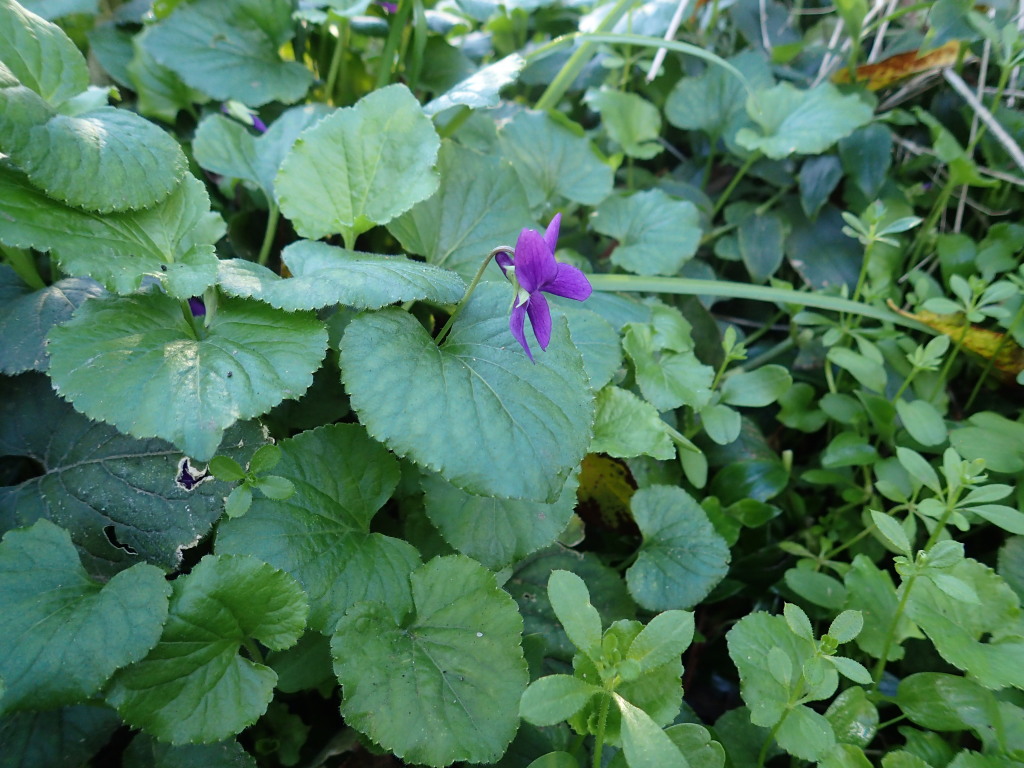Viola odorata
L. Common VioletStoloniferous and/or rhizomatous perennial herb, sparsely pubescent; stems short and erec. Leaves along stem and in rosettes; lamina ovate-circular to broadly ovate, 15–70 mm long and wide, base cordate, apex obtuse, margins crenulate; petiole 1–12 cm long; stipules free, ovate-lanceolate, c. 1 cm long, glandular, ciliate to laciniate. Flower-scapes 4–12 cm long; bracteoles near middle; flowers fragrant. Sepals elliptic to ovate, 5–6 mm long, obtuse, basal appendages prominent; petals usually 12–17 mm long, usually violet or white, lower (anterior) petal broad-elliptic to obovate, usually shallowly emarginate, prominently spurred at base. Capsule ellipsoid, 7–9 mm long, pubescent. Flowers Aug.–Dec.
VVP, VRiv, GipP, OtP, WaP, CVU, EGL, EGU, HSF, HNF, Strz, VAlp. Naturalised all States except NT. Native to Europe, northern Africa, Middle East. Widely cultivated, occasionally escaping into moist habitats.
Often producing cleistogamous flowers with reduced petals and short pedicels.
Entwisle, T.J. (1996). Viola. In: Walsh, N.G.; Entwisle, T.J., Flora of Victoria Vol. 3, Dicotyledons Winteraceae to Myrtaceae, pp. 82–84. Inkata Press, Melbourne.
 Spinning
Spinning




